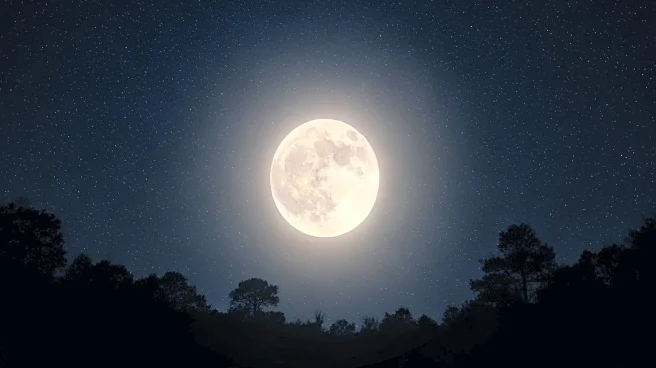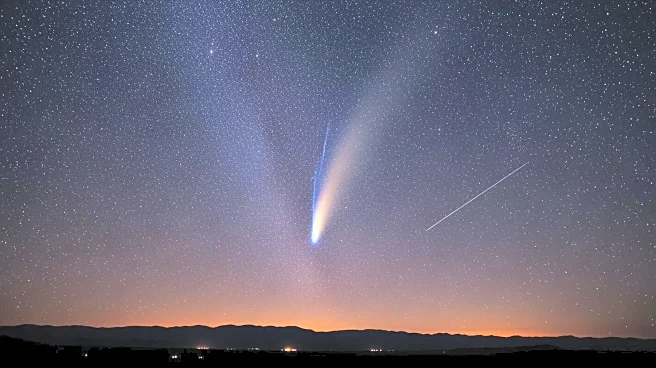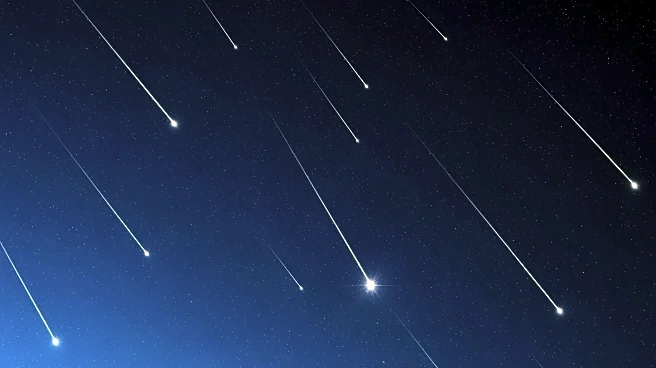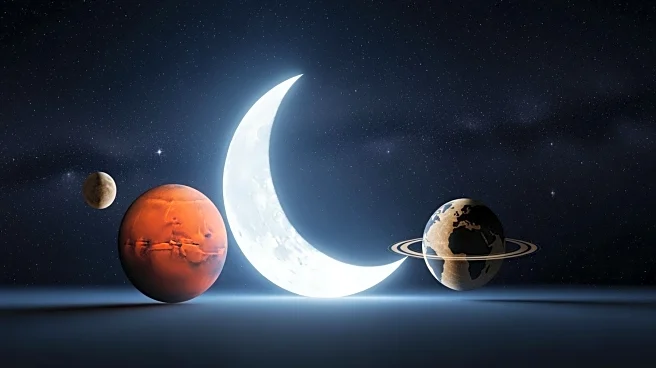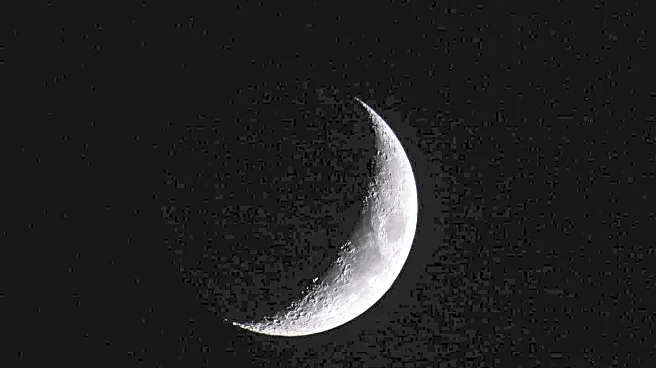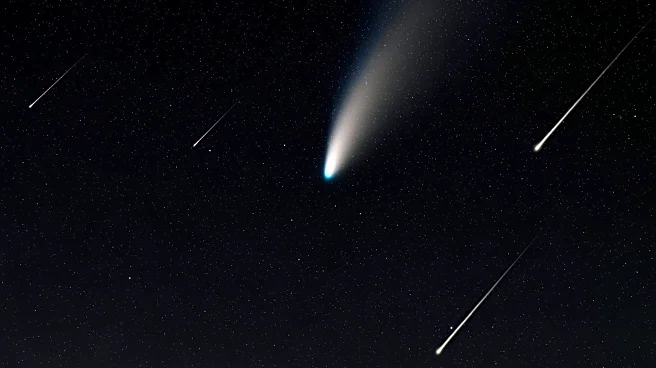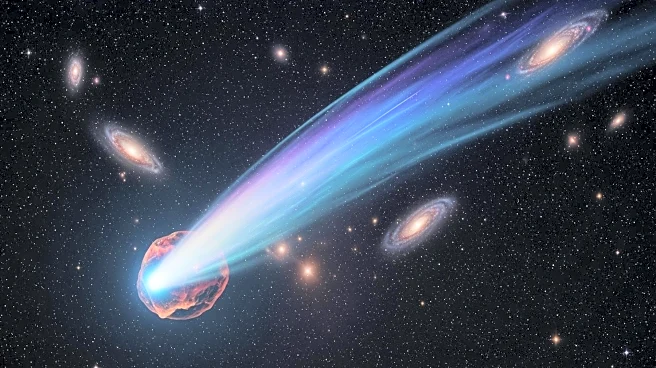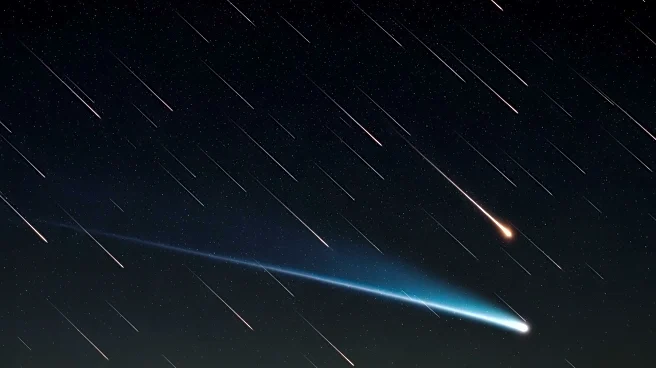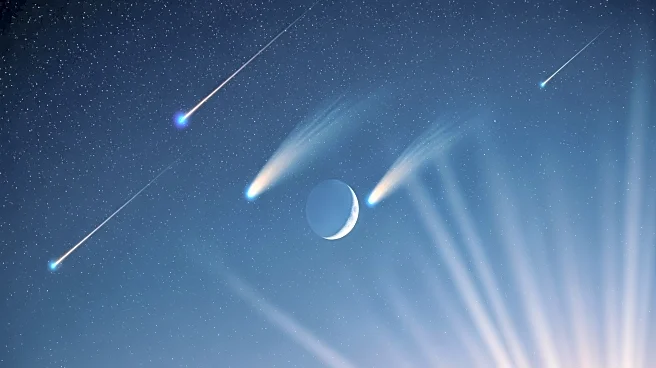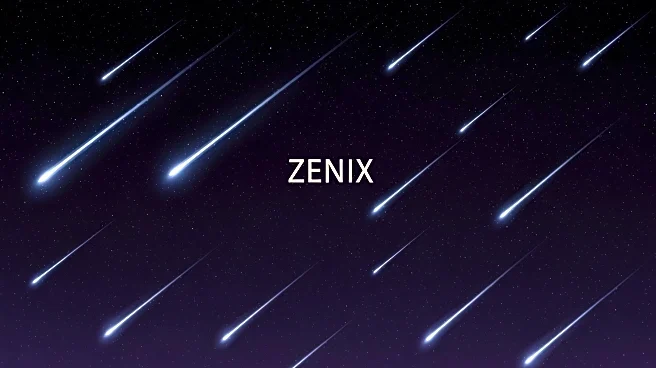What's Happening?
Astronomy enthusiasts are in for a treat as a series of celestial events are set to occur from October 24 to 31, 2025. Key highlights include the visibility of Saturn's two-toned moon Iapetus, which will be positioned north of Saturn, offering a unique
observational opportunity. Additionally, Jupiter will be prominently visible, with a dual shadow transit of its moons Io and Europa observable from the U.S. West Coast. Mercury reaches its greatest eastern elongation, providing a chance to view it alongside Mars and Antares. The dwarf planet Ceres will also be visible, moving against the backdrop of stars in the Cetus constellation. The article provides detailed guidance on observing these events, including the lunar progression from a waxing crescent to the First Quarter, and the visibility of notable deep-sky objects like the Andromeda galaxy.
Why It's Important?
These celestial events offer significant opportunities for both amateur and professional astronomers to observe and study planetary movements and alignments. The visibility of Iapetus and the dual shadow transit on Jupiter provide rare observational phenomena that can enhance understanding of planetary dynamics. The positioning of Mercury, Mars, and Antares offers a chance to observe planetary conjunctions, which are valuable for educational and research purposes. Such events also engage the public's interest in astronomy, potentially inspiring future generations of scientists and increasing public support for space exploration initiatives.
What's Next?
Observers are encouraged to prepare their telescopes and binoculars to take advantage of these events. The visibility of these celestial bodies will depend on local weather conditions and light pollution levels. Astronomy clubs and observatories may organize viewing events to facilitate public engagement. Additionally, these observations could contribute to ongoing research in planetary science, particularly in understanding the dynamics of Saturn's moons and the behavior of Jupiter's atmosphere.
Beyond the Headlines
The observation of these celestial events can have broader implications for cultural and educational outreach. Astronomy has historically played a role in inspiring curiosity and wonder about the universe, and these events can serve as a catalyst for educational programs in schools and community centers. Furthermore, the study of planetary movements and alignments can contribute to the development of new technologies and methodologies in space exploration and observation.
